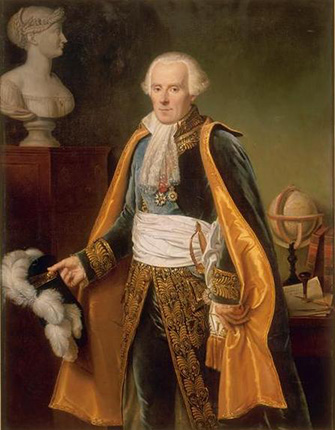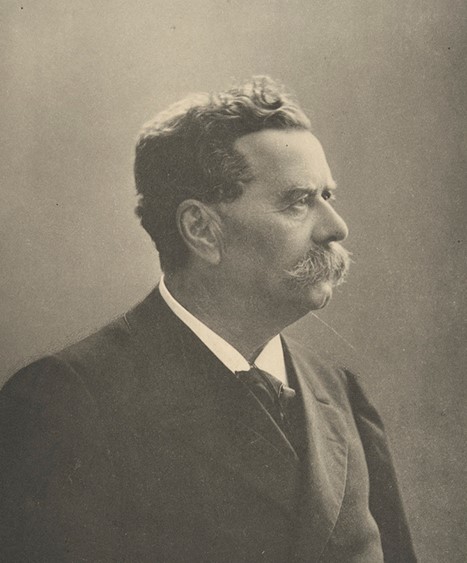A metre is a comfortable measurement. The length of a pike is about one metre, that of Finland is a million, and a cubic metre is one thousand litres. A thousand litres of water weighs a tonne. Easy! It must have been a walk in the park to develop and adopt such a simple and functional system. Or was it?

The collections of the Helsinki University Museum include a walnut box lined with green felt, containing old prototypes for the measurements of one metre, three feet, one kilogram and one pound, as well as a series of weights featuring different sizes of weights ranging from half a milligram to one kilogram. All of the objects are made of gilded brass and platinum, and they each have their own mahogany storage boxes. The measurement prototypes are museum pieces, as the fundamental units of length and mass are no longer defined in terms of physical objects. But who made these prototypes and how did the manufacturer know how large and heavy they should be?
The story of current metric system
The story of our current metric system begins during the French Revolution. At the end of the 18th century, the western world had several different systems of measurement. Different countries used different systems, and the size of standard measurements could even vary within a country. At that time, Finland used a system based on the Swedish ell (roughly equivalent to a cubit), where the measurements related to each other as follows: 1 fathom = 3 ell = 6 feet = 72 inches = 864 lines. A little later, Finland adopted a similar system based on the Russian cubit, or arshin, and used it alongside the Swedish system. There must have been quite a racket at the marketplaces in those times, with sellers and customers checking and rechecking each other’s measurements and calculations!

Anne-Robert-Jacques Turgot (1727–1781), the Controller General of the Finances of the old regime preceding the French Revolution, was frustrated by the myriad measurement systems used in France, comprising several hundred different units, and complained that it hindered trade. He advocated a reform of the measurement system on scientific grounds, to no avail. It took a real revolution!
The French Revolution proved to be an opportune moment to bring about the measurement reform. The politician Charles-Maurice de Talleyrand-Périgord (1754–1838) championed the effort. He convinced the National Constituent Assembly on 9 March 1790 with his eloquent plea:
“Gentlemen, our untold various weights, measurements and their peculiar nominative values, are a source of confusion among the populace and in trade. But the true origin of the mistakes and mistrust is not the diversity of measurements itself, but the variance in terms of content belied by the similarity of their nomenclatures. Such variance, which is a perpetual trap in any disagreement for the gullible, is much more common than we dare believe, as the very names ‘foot’, ‘cubit’, etc., which are used with the apparent assumption of uniform value, contain a host of very different measurements.” (English translation based on Finnish translation by Jukka Nyblom, 2020.)
Talleyrand proposed that a metre should be defined as the length of string that, when used in a pendulum, would swing once from one side to the other in a second. This proposal was accepted, after which the crème de la crème of French scientists established the commission of weights and measures to promote the reform. Meanwhile, the commission was deeply dissatisfied with the method used to define the metre. It believed that dividing a day into the Babylonian concept of seconds was a completely arbitrary invention, and one that should not be allowed to tarnish the new, “natural” metre. After lengthy discussions they decided that the distance from the North Pole to the Equator should be exactly ten million metres. This meant that the metre would be based on the dimensions of the Earth, and not those of the ruler of the land, as it was in England. The only thing left was to find someone to go and measure this distance.
There was an intense debate about the shape of the Earth in the 1730s. Around this time, meridian arcs, or long distances between points on the same latitude, were being measured on different continents using triangulation. The group advocating that the Earth was a sphere, which was squished at its poles like a mandarin, was declared the winner after the expedition of the French Pierre Louis Maupertuis (1698–1759) conducted meridian measurements in Lapland. Since this had effectively determined the shape of the Earth, it was no longer necessary to literally measure the trip from the North Pole to the Equator. They did, however, decide to measure a ten-degree arc of the meridian from Dunkirk to Barcelona. The arc was divided between two astronomers, Pierre-Françoise-André Méchain (1744–1804) and Jean-Baptiste-Joseph Delambre (1749–1822).

The French Revolutionary Wars with Prussia and Spain significantly delayed the measurement effort, which was not completed until 1798. When analysing the results of the measurements, the scientists found that the shape of the Earth was unexpectedly irregular. This meant that they also had to rely on old measurements to evaluate the distance. The French mathematician Pierre-Simon Laplace (1749–1827) studied and compiled the measurement results, finally arriving at an estimate of the shape of the Earth and, consequently, of the metre: 443.296 Paris lines according to the old standard measuring rod. The metre now had a set length.
Reference standards to Finland
In Finland, the adoption of the metric system was advocated by Adolf Moberg (1813–1895), who served as the professor of physics at the Imperial Alexander University between 1849 and 1875. In his letter to the state treasury committee of the Senate of Finland under the Russian Empire, Moberg described the benefits of a uniform system of measurements in terms similar to what Talleyrand had suggested 80 years previously. Once the treasury committee was convinced, it drafted the guidelines for how measurement prototypes could be acquired in Finland. The intention was that Selim Lemström, a geophysicist based in Paris, would supervise the manufacture of the prototypes and measure them to ensure their precision. He was given a budget of 3,600 marks, and was obligated to report on his progress to a commission set by the Finnish Society of Sciences and Letters. Lemström received considerable help from his colleagues working on similar prototypes in Paris and Stockholm, and ultimately returned to Finland in spring 1871 with two sets of measurement prototypes in tow. Precise instructions were drafted for the use and protection of the prototypes, requiring that they were to be kept in a suitable, dry place, locked in their own storage boxes, and that their use was to be supervised by a person well versed in the security instructions. One set of prototypes was sent to the state treasury committee and the other to the University. Lemström exceeded his budget by 3,000 marks, but as it was deemed that the increased costs had been beyond his control and since the project had been brought to a successful conclusion, he was praised for his work.

The adoption of the metric system was a lengthy process. The Grand Duchy of Finland officially adopted it in the beginning of 1887, but it did not become compulsory until 1892. Even after this, the old measurements lived on in the everyday lives of the Finnish people, and we still have not entirely eradicated them. For example, television screens are still measured in inches, not centimetres.
This object of the month symbolises the greatest weakness of the metric system: defining the metre and kilogram with physical objects. August Fredrik Sundell (1843–1924), head of the commission for weights and measures between 1888 and 1916, also realised this weakness when he found that he kept getting different results for the measurement prototypes when he was inspecting them. However, the adoption of the metric system was a great stride forward for creating a globally uniform system of measurement, and the decimal system made it much easier to use than its predecessors.
The length of the metre was completely redefined based on an atomic-level phenomenon in 1960 and, ultimately, based on the distance that light travels in a tiny amount of time in 1983. The length of the metre is currently tied to the speed of light, which is considered a perpetual universal, not on a Parisian measuring rod which was difficult to measure precisely and constantly changing. That is the story of the metre.
Mikael Jahn, guide, Helsinki Observatory
Translation: University of Helsinki Language Services.
Sources:
Holmberg, Peter (1987). Mått och vikter i Finland på 1800-talet. Arkhimedes, 39. vsk, 88-100.
Nyblom, Jukka (2020). Metrin synty. Tieteessä tapahtuu, 38 (5), 3-13. https://journal.fi/tt/article/view/99565
